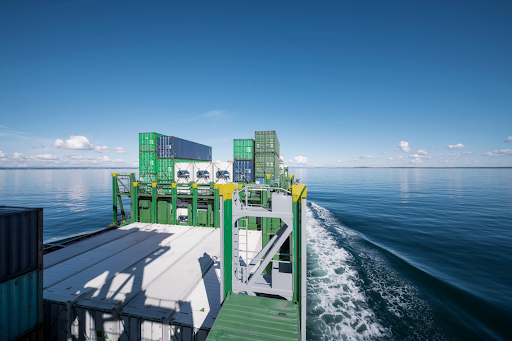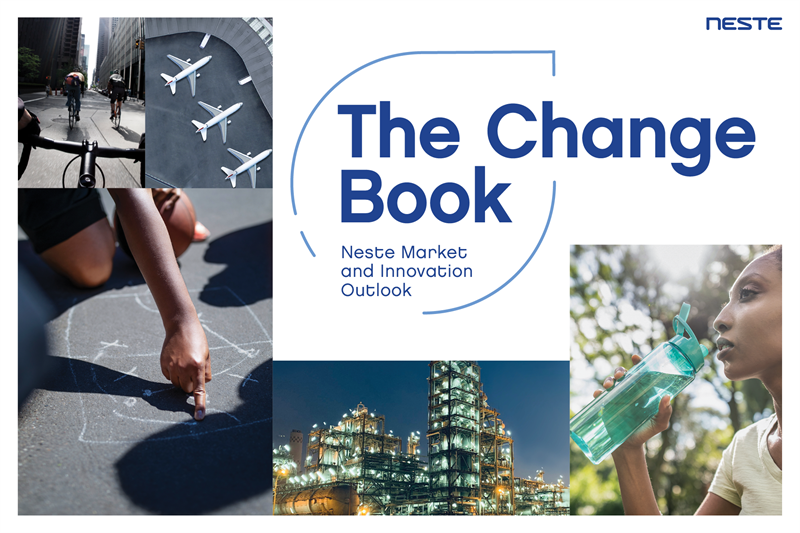
Neste’s Market and Innovation Outlook report published
Neste has today published its new Market and Innovation Outlook report, The Change Book, which compiles Neste’s expert views based on validated data for regulators, innovators, industry players and other organizations aiming to create a renewable and circular future. The publication provides insight and addresses the key questions on how to develop global regulatory frameworks, connections between consumers and circular economies, how to lead a wider industrial emissions revolution, and how to create sustainable global mobility. Above all, The Change Book is an invitation to collaborate in expediting the development of new technologies needed for sustainable change.

Global ambition and commitments to tackle the climate crisis are on the rise, and the time to act and make a low-emission economy a reality is now. It is paramount to establish greater clarity around long-term policy targets and regulatory frameworks to lay the groundwork for accelerating change. The Change Book examines the balance between utilizing existing solutions while innovating new technologies and the need for a regulatory level playing field.
“The data shows clearly that we should embrace all solutions to reduce emissions and enable the use of a full toolbox of raw material options rather than trying to guess and pick technological silver bullets. We need breakthrough innovations and focus on research and technology development in order to provide cost-efficient and value-creating solutions for the future,” says Lars Peter Lindfors, Chief Innovation Officer, Senior Vice President at Neste.
The book is divided into three key themes centered around the topics of growing consumer demand for sustainability and circular economy, new opportunities for emission reductions in the industrial sector, and the development and innovation needed for sustainable mobility.
Connecting consumers and the circular economy
The global growth of the middle class and urbanization are ramping up energy demand, consumption and waste generation, but at the same time increasing demand for sustainable solutions. The Change Book takes a closer look at how to tackle growing waste volumes and highlights the potential of chemical recycling as a solution to increase plastics recycling rates and accelerating the shift to a circular economy. With chemical recycling, hard-to-recycle waste plastics can be turned into raw material for high-quality, high-performance polymers and chemicals. Neste aims to process more than 1 million tons of plastic waste annually from 2030 onwards.
Information Source: Read More–>
Oil and gas, press , | Energy, Climate, Renewable, Wind, Biomass, Sustainability, Oil Price, LPG, Solar, Electric,

